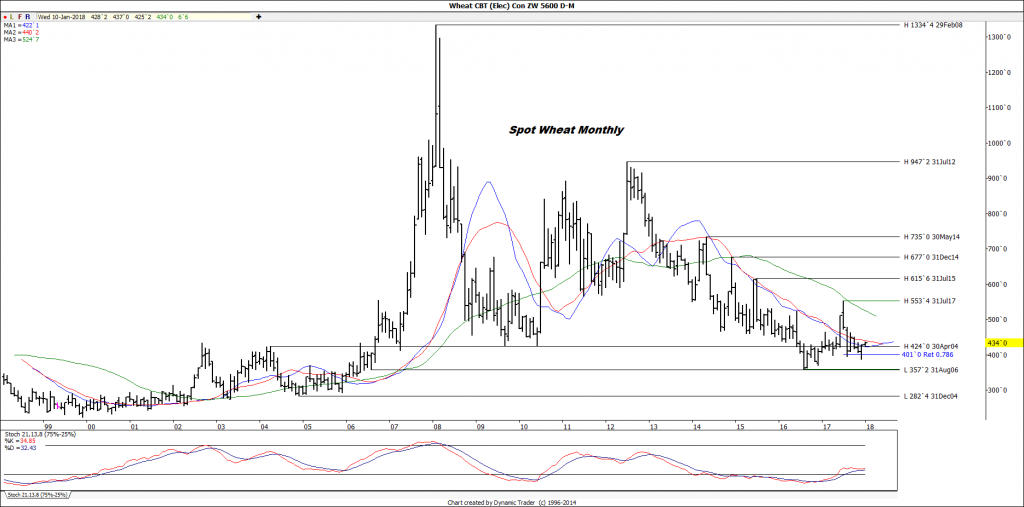By: Dan Hueber –
My apologies in advance to Clement Clark Moore.
‘Twas the day before WASDE, and all thro’ the pits, not a creature was stirring, not even the Bits(coin). The estimates were published by newswires with care, in hopes that Uncle Sam will not give us a scare. The traders were huddled behind their quote screens, with visions of limit moves or margin calls for those mean.
I suspect at this point you are thinking, it must be really be slow over in the commodity world right now if he is penning bad knock-off poetry, and of course, you would be correct. The grain and soy markets continue to tread water as we once again await “the word of gov.”
While everything is conjecture as we lead up to these figures, I would suggest that maybe the news we should be keying in on will be in wheat. The average trade estimate for total winter wheat acreage is 31.3 million acres, which if realized, and without additional winter kill will be the lowest acreage in this nation since 1909. This would be less that ½ of the 65.52 million acres planted at the peak in 1982, and would be 34% below the highest acreage this century, which was 46.78 million set in 2008. Granted, we all recognize this is about economics and the world by no means is suffering from a lack of supply but, when you stop and reflect, it is stunning to think that the United States has moved from being literally the breadbasket for the globe to debating if there is even a future raising wheat in this nation. Talk about going gluten free. One of the harsh realities of a free-market and capitalism is that fact that production will over time flow to the lowest cost producer, and that trend has been shifting away from the U.S. As foreboding as all of this sounds, I am not in the camp that believes it will go that far and in fact, that is one of the reasons that I said, maybe wheat is the market to watch evolving from this report. It is already projected that domestic carryout will drop this coming year to the lowest level in three years, be that as a raw number of as a stock to usage ratio, and I suspect these figures will be trimmed more in the months ahead.

The old adage is that if ending stocks are moving lower, prices will begin moving higher and it would appear that we have lulled everyone into complacency, believing that any threat to food supply/security has been eradicated by technology and modern farming practices. Truly, everyone is thinking the same way, and you know what that means; No one is thinking. Keep your eyes on the wheat market.
Having said all of this, I now have to report that export sales for wheat were terrible this past week coming through at only 71,500 MT or 2.63 million bushels. This was 45% below last week’s dreadful number and 86% below the 4-week average. The top buyers for the week were Taiwan with 73.6k MT, Nigeria with 11k and the Republic of South Africa at 8.8k. There were reductions of a combined 92.2k MT. This brings the marketing YTD total up to 718.03 million bushels or 73.6% of the projected 975 million. There are 21 weeks left in the year, which means we now need to average 12.23 million new sales each week. Corn sales improved significantly from last week (+430%) coming in at 437,700 MT or 17.23 million bushels but this still marks the second lowest of the marketing year and was 54% below the 4-week average. Top sales were made to Japan with 163.7k MT followed by Colombia at 86.4k and the Taiwan at 70.8. Marketing year to date we have reached at total of 1.067 billion bushels or 55.4% of the projection. With 34 weeks to go this means we need to average 25.23 million per week. As would be expected post-holiday, beans sales bounced back as well with a total or 607,400 MT or 22.32 million bushels. This was up 28% from the previous week but still 47% below the 4-week average. Top sales went to China with 616.5k MT, followed by Germany with 219.2 and the Netherlands at 85.2k. YTD, we have reached 1.531 billion bushels or 69% of the projected total and will need to average 20.41 million bushels per week to hit the mark. Note this morning that there were announcements of 132,000 MT (4.85 million bushels) of beans sold to unknown destinations.
Last but not least this morning, there are reports that both Canada and Mexico have become convinced that the Trump administration is planning to pull out altogether from NAFTA and are expecting a termination letter. Needless to say, this is not good news for United States agriculture and if you have not already, it is worth your time to contact your representatives. Last week I was asked by the host of Market to Market, who would be the real winner if NAFTA was killed. My response was feed grain producers in Mexico, Argentina and Brazil.